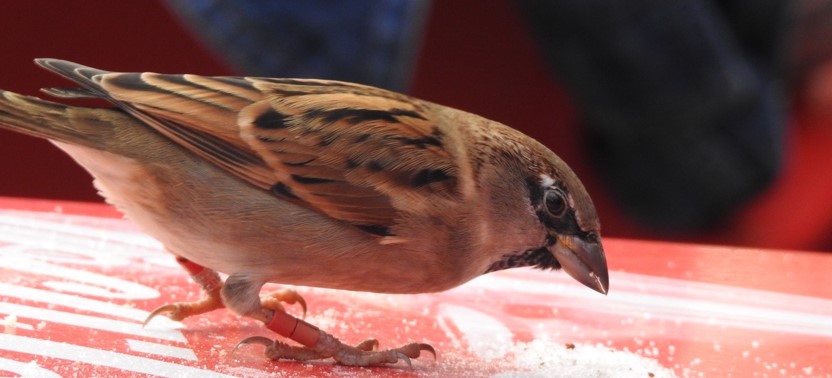New paper about House sparrows and oxidative stress (Frontiers in Ecology and Evolution)
23 OCT 2017 - 12:07 CET
Our lab just published a new paper about house sparrows and stress entitled: The Influence of Urban Environments on Oxidative Stress Balance: A Case Study on the House Sparrow in the Iberian Peninsula. In Frontiers in Ecology and Evolution special issue about Behavioural and Ecological Consequences of Urban Life in Birds
The House Sparrow is a globally distributed species and is closely associated with anthropised environments. They are well-adapted to urban life; therefore the decline of their populations in Europe represents an unexpected event that demands an investigation into its causes. Causes that have promoted this decline are not well-known, but one of the highlighted hypotheses is an increase of oxidative stress linked to the toxicity of pollution in urban areas. From an ecophysiological perspective, oxidative damage, antioxidant defense, and oxidative balance are considered reliable indicators of environmental stressors such as pollutants. To carry out this study, blood samples were collected from House Sparrows in three different habitats that varied in terms of urbanization degree: urban, suburban, and rural; during the winter and breeding season. According to our results, urban sparrows showed higher levels of oxidative damage and higher activity of antioxidant enzymes, but lower antioxidant capacity in comparison with the rural birds; and these differences especially increase during the breeding season. The maintenance of oxidative balance increases in an urban environment in comparison to a rural one; we suggest that the high level of pollution and the poor quality diet linked to urban environments. The breeding season is expected to be particularly challenging for the oxidative balance of urban birds, when the reallocation of resources between self-maintenance and reproduction may be critical due to the scarcity of antioxidants found in urban areas. This study may contribute to determining the causes of the population decrease of House Sparrows in cities.

